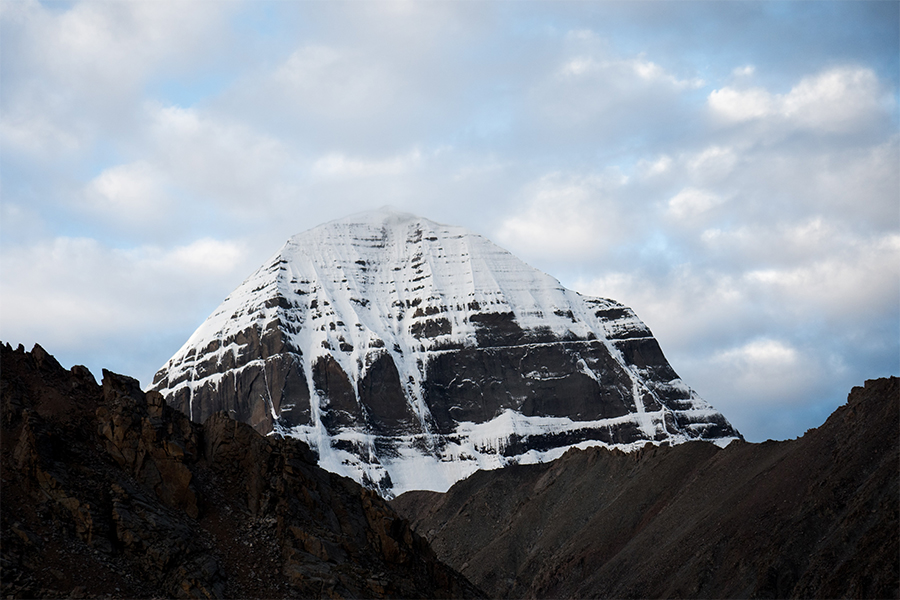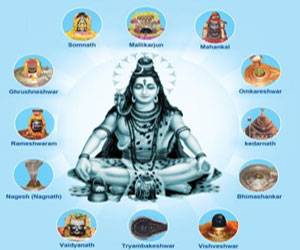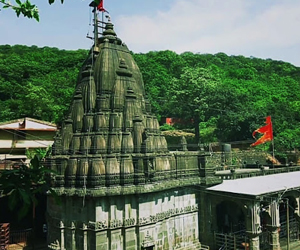Pashupatinath Mandir Nepal
Pashupatinath Temple is one of the most famous temples in Nepal. Pilgrims going to Kailash Mansarovar Yatra through Nepal generally visit Pashupatinath Temple as part of their tour package. Pashupatinath Temple is also one of the oldest Shiva temples that exist today. The temple is not just a single temple, but an entire temple complex that consists of several other temples and ashrams. Pashupatinath Mandir is one of the holiest Jyotirlinga temples of Lord Shiva. This temple is also one of the World Heritage Site that exists in the Kathmandu Valley of Nepal.
Explore Now: Nepal Tour Packages
Meaning of Pashupatinath Temple
The name Pashupati means ‘lord of the beasts’. Pashupati is a combination of two words. ‘Pashu’ means beasts, and ‘pati’ means lord or protector.
Location of Pashupatinath Temple
Pashupatinath Temple is located on the outskirts of Kathmandu, the capital city of Nepal. The temple complex is located on both sides of the Bagmati River.
Explore Now: Pashupatinath Tour Package
History of Pashupatinath Temple
Historians do not know when the original temple was built. However, the earliest records show that this temple is as old as the 4th century. Some believe that a Lichhavi king called Prachanda Deva built the temple. Another source states that there was a small shrine in the form of a shiv linga. Supuspa Deva built a five-storey temple in its place. A king called Shivadeva again constructed this temple with new structures during the 11th century. Over time, many rulers built small and large temples around the main temple. These include the Rama Temple in the Vaishnava temple complex and Guhyeshwari Temple. The current structure of the temple was built in 1692.
The Architecture of Pashupatinath Temple
The main temple is built in the style of a Nepalese pagoda. The main temple is inside a massive courtyard which is surrounded by an outer courtyard. The temple is situated on a platform, which is 23 meters high. The temple complex is vast and is on both sides of the Bagmati River. There are four doors in four directions and all are covered in silver. The wooden architecture of the temple is a sight to behold. Wood was used in the construction of the original temple. However, termites destroyed much of the temple structure. Later on, the temple was reconstructed in the 17th century. The roof of the temple is built of copper and gilded with gold.
Lingam in Pashupatinath Temple
The lingam inside Pashupatinath Mandir is unique. The shiv linga is called ‘mukhalinga’ or the linga with faces or ‘mukhs’. It is built of stone and has a silver base and a silver serpent protects the lingam inside the inner sanctum (garbha gruha). It has four faces on four sides, and the top face also indicates the various incarnations of avatars of Lord Shiva. These five faces symbolize the five Panch tattvas or five natural elements that make the universe. These five faces are:
- Sadyojata or Barun is the west-facing face
- Vamdeva or Uma Maheshwari is the north-facing face
- Tatpurusha is the east-facing face
- Aghor is the south-facing face
- Ishana is the zenith facing face
Each of these faces has two hands, one that holds the kamandal and the other that holds a Rudraksha Mala. The idol is adorned with a golden attire or vastram which is removed only during abhisheka. You will not find Lord Shiva adorned with ornaments in any temple in India or Nepal. It is only in the Pashupatinath Mandir that the shiv linga is dressed in gold ornaments.
Explore Now: Muktinath Tour Package
Other Temples to Visit Near the Pashupatinath Temple
There are numerous temples inside the vast Pashupatinath Temple complex. The idols of various Hindu deities like Ram, Sita, Parvati, Hanuman, Lakshmi, Ganapati, Kartikeya, and Vishnu, being the major gods and goddesses. There are several other smaller temples in the temple complex too, which are dedicated to other Hindu deities. The major temples in the temple complex are:
- Guhyeshwari Temple – This is a 17th-century temple that is close to Pashupatinath Temple. The temple has the main idol of Sati Devi. This is a Shakti Peeth temple and is also called Guhyekali. Its Sanskrit name means goddess of a cave. If you are not a Hindu by religion, you will not be allowed to enter this temple.
- Budha Nilkanth Temple – This temple is an open-air temple that is devoted to Lord Mahavishnu. The reclining or sleeping posture of Lord Vishnu is the main idol in this temple. Both Hindus and Buddhists have tremendous devotion to this temple.
- Kirateshwar Mahadev Temple – On full moon days, a classical music concert is held here. According to a popular mythological legend, Lord Shiva appeared to Arjuna in the form of a hunter or kirat at this place.
- Cremation grounds – The banks of the Bagmati River which flows near Pashupatinath Mandir are cremation grounds where rituals are performed for the deceased. The cremation grounds are on both banks of the river.
Legends Behind Pashupatinath Temple
There are so many legends behind how Pashupatinath Temple was formed. All these legends are centuries old and they make Pashupatinath Temple even more worth visiting.
According to one legend, Shiva and Parvati once came to the banks of the Bagmati River. They loved the place so much that they decided to live here. They assumed the form of two deer and started to live here. When the gods came to know about them, they requested Shiva and Parvati to return to the heavens. But Shiva and Parvati refused to do so. A fight took place and in the process, one antler broke and fell on earth. The place where the broken antler fell became a shiv linga. It was buried deep in the earth for many years and was lost. But one day, a cow came and started to milk this place by herself. Seeing this amazing phenomenon, the shepherd digs the earth and found the shiv linga. This is one of the origins of Pashupatinath Mandir.
According to a historical chronicle of Nepal called Gopal Raj Vamshavali, a Licchavi king called Prachanda Deva built Pashupatinath Temple.
Another popular legend states that there was a small devalaya or shrine which was in the form of a shiv linga. King Supuspa Deva built a five-storey temple here. Many kings like Shivadeva reconstructed the temple and built more structures for it. A king called Ananta Malla added a roof to the temple.
Importance of Pashupatinath Temple
Pashupatinath Temple is special as this is also where the old people come and pass the last days of their life. By doing so, they will die peacefully and go to the heavens. Even young people come to Pashupatinath Temple as the darshan of the divine shiv linga is said to purify one from all the sins that they have committed during their lifetimes. A darshan of Pashupatinath Temple is so powerful that they will take the human form in their future birth.
Interesting Facts About Pashupatinath Temple
- Non-Hindus are not allowed to enter Pashupatinath Temple.
- You will also see cremation grounds next to Pashupatinath Mandir. Some ghats on the Bagmati River are used for the cremation of royal members while others are used for the general public. The reason for this is that people should remain aware of the truth of death. It is also because dying here almost promises the soul to take birth as a human in the next birth.
- There are paintings of gold in the temple. You will find paintings that are suggestive of erotic postures, and this is a way to express love and sex as part of the culture and not as a taboo subject.
- There are many ashrams, yogis, and sadhus in and around Pashupatinath Temple.
- Pashupati Bagmati aarti is an event that is a must-visit. The aarti takes place each evening on the banks of the Bagmati River. Songs of devotion and praise of Pashupatinath are sung. The songs are sung rhythmically along with a clash of gongs, cymbals, and the beating of drums. This makes the entire atmosphere divine and full of energy.
- Shiv Tandav Nrutya or dance is also part of the Pashupati Bagmati Aarti where devotees perform the Shiv Tandav dance. Lord Shiva himself originally developed the dance as a dance form.
Frequently Asked Questions
What is the best time or season to visit Pashupatinath Temple?
You can visit Pashupatinath Temple as part of your Kailash Mansarovar Yatra Tour Package. The best time are the summer months from March to May, and the autumn months from September to November.
What are the aarti timings of Pashupatinath Temple?
Darshan’s timings are 4 am to 12 noon and 5 pm to 9 pm. Aarti’s timings are 6 pm to 7.30 pm. The temple is closed for visitors from 12 noon to 5 pm every day.
What are the rules to observe to enter Pashupatinath Temple?
Only Hindus, Buddhists, Sikhs, and Jains are allowed to enter the temple. Hindus who do not belong to India or Nepal are not allowed to enter the temple. If you are from other religions, you can watch Pashupatinath Temple from the other side of the Bagmati River banks.
How do I reach Pashupatinath Temple?
Taking a flight to Kathmandu is the best way to reach Pashupatinath Temple. Pashupatinath Temple is just 10 minutes by taxi from Tribhuvan International Airport. From Kathmandu City, it takes 6 hours by cab drive to reach Pashupatinath Temple.
Which festivals are celebrated in Pashupatinath Temple?
Maha Shivratri, Teej, and Balachaturdashi are celebrated in Pashupatinath Temple.








